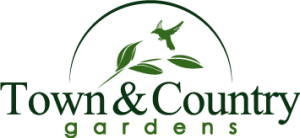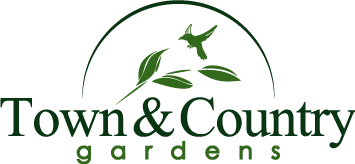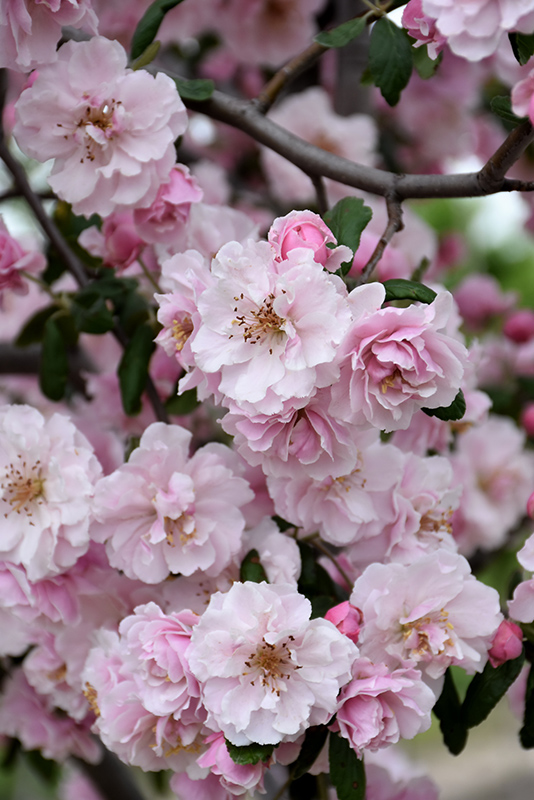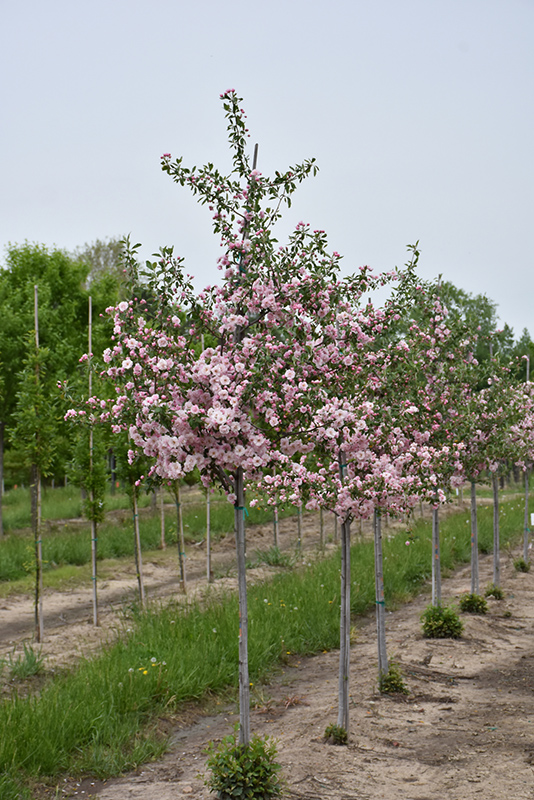Plant Library
Prairie Rose Flowering Crab
Malus 'Prairie Rose'
Height: 20 feet
Spread: 15 feet
Sunlight:
![]()
Hardiness Zone: 4
Other Names: Roseybloom, Crabapple
Description:
This flowering crab is a fruitless hybrid; it boasts deep-pink double blooms on broadly sweeping branches; an ornamenental beauty with no messy fruit to worry about
Ornamental Features
Prairie Rose Flowering Crab is clothed in stunning clusters of double pink flowers along the branches in early spring. It has dark green deciduous foliage. The pointy leaves turn yellow in fall.
Landscape Attributes
Prairie Rose Flowering Crab is a deciduous tree with a more or less rounded form. Its average texture blends into the landscape, but can be balanced by one or two finer or coarser trees or shrubs for an effective composition.
This tree will require occasional maintenance and upkeep, and is best pruned in late winter once the threat of extreme cold has passed. It has no significant negative characteristics.
Prairie Rose Flowering Crab is recommended for the following landscape applications;
- Accent
- General Garden Use
Planting & Growing
Prairie Rose Flowering Crab will grow to be about 20 feet tall at maturity, with a spread of 15 feet. It has a low canopy with a typical clearance of 2 feet from the ground, and is suitable for planting under power lines. It grows at a medium rate, and under ideal conditions can be expected to live for 50 years or more.
This tree should only be grown in full sunlight. It does best in average to evenly moist conditions, but will not tolerate standing water. It is not particular as to soil type or pH. It is highly tolerant of urban pollution and will even thrive in inner city environments. Consider applying a thick mulch around the root zone in winter to protect it in exposed locations or colder microclimates. This particular variety is an interspecific hybrid.
Disclaimer - This Plant Finder tool is an online resource representing many of the varieties that we carry over the course of the season, and is intended for informational purposes only. Inventory varies seasonally, so we cannot guarantee that every plant will be in stock at all times - please contact the store directly for availability. It does not include our entire inventory of plants, so be sure to visit our store to see varieties that may not be represented on this list.




